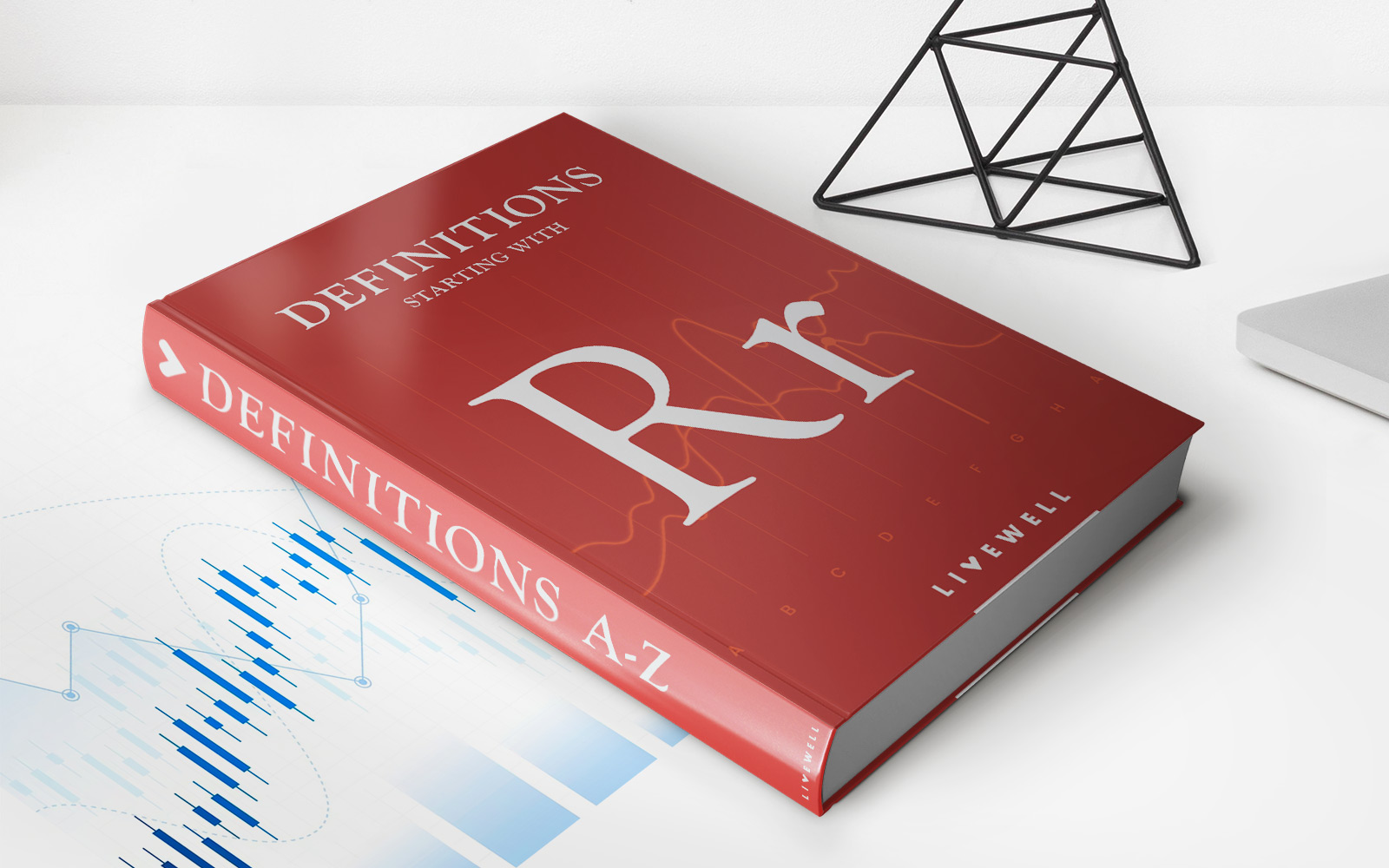

Finance
How Much Collateral For A Business Loan
Modified: February 21, 2024
Looking for finance options for a business loan? Discover how much collateral you'll need for securing the funds you need to grow your business.
(Many of the links in this article redirect to a specific reviewed product. Your purchase of these products through affiliate links helps to generate commission for LiveWell, at no extra cost. Learn more)
Table of Contents
- Introduction
- Understanding Collateral for Business Loans
- Types of Collateral
- Real Estate
- Equipment and Machinery
- Inventory and Accounts Receivable
- Business Assets
- Personal Assets
- Assessing the Value of Collateral
- Loan-to-Value Ratio
- Importance of Collateral in Loan Approval
- Collateral Requirements by Lenders
- Alternatives to Collateral
- Conclusion
Introduction
When it comes to obtaining a business loan, one of the key factors that lenders consider is collateral. Collateral acts as a security for the loan and provides assurance to lenders that they have a valuable asset to fall back on in case the borrower defaults on the loan. Understanding the concept of collateral and how it affects your loan application is crucial for any business owner seeking financial assistance.
In simple terms, collateral is an asset or property that you pledge to a lender as a guarantee for repayment of the loan. If you are unable to repay the loan, the lender has the right to seize and sell the collateral in order to recoup their losses. Collateral provides lenders with a sense of security, as it reduces the risk of lending to businesses with limited credit history or high-risk profiles.
Collateral requirements vary depending on the type of loan and the lender’s policies. Different types of collateral can be used to secure a business loan, including real estate, equipment, inventory, accounts receivable, and personal assets. The value of the collateral and its liquidity are important considerations for lenders in assessing the risk and determining the loan terms.
In this article, we will delve deeper into the concept of collateral for business loans. We will explore the different types of collateral that can be used, discuss how lenders assess the value of collateral, understand the loan-to-value ratio, and highlight the importance of collateral in loan approval. We will also touch upon the collateral requirements set by lenders and discuss alternatives to collateral for businesses that may not have sufficient assets to pledge.
By the end of this article, you will have a comprehensive understanding of collateral for business loans, empowering you to make informed decisions when seeking financing options for your business.
Understanding Collateral for Business Loans
Collateral is an essential component of the loan application process for many business owners. It serves as a form of security for lenders, minimizing the risk they face when extending credit. By understanding how collateral works, you can navigate the loan application process more effectively and increase your chances of approval.
As mentioned earlier, collateral refers to an asset or property that the borrower pledges to the lender as a guarantee for repayment of the loan. In the event of default, the lender has the right to seize the collateral and sell it to recover their losses. This serves as a safety net for lenders, ensuring they have a means to recoup their funds even if the borrower is unable to fulfill their repayment obligations.
Collateral can take many forms, depending on the type of loan and the lender’s requirements. Common types of collateral include real estate, equipment, inventory, accounts receivable, and even personal assets such as a home or a car.
Why is collateral important for lenders? It provides them with a way to mitigate the risk associated with lending to businesses. When a borrower pledges collateral, it shows their commitment to repaying the loan and provides a level of assurance for the lender. It also gives lenders the confidence to offer more favorable loan terms, such as lower interest rates and longer repayment periods.
For borrowers, collateral serves as a means to secure funding when they may not have strong creditworthiness or a long track record of successful business operations. It can help overcome certain obstacles in the loan approval process, such as a lack of business history or a low credit score.
However, it’s important to note that not all loans require collateral. Small business owners can often secure unsecured loans, which do not require any collateral. These loans are typically based on factors such as credit history, revenue, and business plans.
Overall, collateral is an integral part of the business loan landscape. It provides lenders with reassurance and allows businesses to access the funding they need to grow and thrive. By recognizing the importance of collateral and understanding its role in the loan application process, you can make more informed decisions when seeking financing options for your business.
Types of Collateral
Collateral for business loans can come in various forms, depending on the nature of the business and the assets available. Understanding the different types of collateral can help you determine which assets to leverage when applying for a loan.
1. Real Estate
Real estate is a common form of collateral for business loans. It includes properties such as land, buildings, or commercial spaces that the business owns. Lenders often prefer real estate as collateral because it typically holds significant value and can be easily liquidated if necessary.
2. Equipment and Machinery
If your business relies heavily on equipment or machinery, it can be used as collateral for a loan. This includes assets such as vehicles, manufacturing equipment, office equipment, or specialized machinery. The value of these assets can contribute to the overall collateral value and help secure the loan.
3. Inventory and Accounts Receivable
For businesses that have a substantial amount of inventory or accounts receivable, these assets can be used as collateral. Inventory refers to the stock of goods or products that a business holds, while accounts receivable represents the outstanding payments owed to the business by its customers. Lenders may consider the value of these assets when assessing the collateral worth.
4. Business Assets
Other business assets, such as intellectual property, patents, trademarks, or copyrights, can also serve as collateral. These intangible assets can have significant value, especially for businesses in creative industries or those with unique products or services.
5. Personal Assets
In some cases, lenders may require the business owner to pledge personal assets as collateral. Personal assets can include a personal residence, investments, or other valuable possessions. It’s important to carefully consider the implications of using personal assets as collateral, as it can put your personal finances at risk.
When considering collateral for a business loan, it’s essential to assess the value and liquidity of the assets. Lenders will evaluate the market value, condition, and ease of selling the collateral in the event of default. Additionally, the specific requirements for collateral may vary between lenders, so it’s crucial to clarify and understand the terms set by the lender before proceeding with the loan application.
By understanding the different types of collateral available and evaluating the assets your business possesses, you can make an informed decision about which assets to leverage when applying for a business loan.
Real Estate
Real estate is a valuable and commonly used form of collateral for business loans. It encompasses properties such as land, buildings, or commercial spaces that the business owns. Using real estate as collateral provides lenders with a tangible asset that can be sold to recover their funds in the event of default.
One of the advantages of using real estate as collateral is its potential for appreciation in value. Over time, real estate properties can increase in worth, which strengthens the collateral’s value and provides additional security to the lender. This can be beneficial when seeking larger loan amounts or securing more favorable loan terms.
Commercial properties, such as office buildings or retail spaces, are particularly attractive as collateral due to their potential for generating rental income. Lenders may view properties with established tenants and steady rental income as less risky, which can positively impact your loan application.
When using real estate as collateral, lenders will evaluate factors such as the property’s market value, condition, and location. They will consider the loan-to-value ratio, which is the percentage of the loan amount relative to the appraised value of the property. Typically, lenders prefer a lower loan-to-value ratio to reduce their risk exposure.
It’s important to note that using real estate as collateral may require an appraisal to determine the property’s value. This appraisal cost is typically borne by the borrower and is an additional expense to consider when applying for a loan.
In some cases, lenders may require the borrower to provide additional documentation regarding the real estate, such as proof of ownership, property tax statements, or information about any existing mortgages or liens on the property. Having this information readily available can streamline the loan application process.
If you decide to use real estate as collateral, it’s crucial to understand the potential consequences. Defaulting on the loan could result in the lender foreclosing on the property and selling it to recover their funds. This would lead to the loss of your real estate asset. Therefore, it’s essential to evaluate the risks involved and ensure you have a solid repayment plan in place.
Overall, real estate can be a valuable and effective form of collateral for business loans. It provides lenders with confidence in the loan’s security and can open doors to larger loan amounts and lower interest rates. However, it’s crucial to carefully weigh the risks and benefits before leveraging your real estate assets for a loan.
Equipment and Machinery
For many businesses, equipment and machinery are essential assets that can be used as collateral to secure a business loan. Whether it’s heavy machinery, vehicles, or specialized equipment, these assets hold significant value and can provide lenders with a sense of security.
Using equipment and machinery as collateral offers several advantages. Firstly, it allows businesses to access financing without having to sell or liquidate their valuable assets. This means that the business can continue to operate and utilize the equipment for day-to-day operations while still obtaining the necessary funding.
Lenders often view equipment and machinery as relatively liquid collateral. In the event of a default, these assets can be sold to recover the loan amount. Their liquidity makes them appealing to lenders and can increase the chances of loan approval and favorable terms.
When using equipment and machinery as collateral, lenders will consider factors such as the condition, age, and market value of the assets. They may require documentation, such as purchase receipts, maintenance records, or appraisals, to assess the asset’s worth accurately.
In some cases, lenders may request a complete inventory of the equipment and machinery being used as collateral. This helps them understand the overall value and assess the potential for re-sale in the market. It’s essential for borrowers to maintain accurate records of their equipment and have them readily available during the loan application process.
It’s worth noting that the value of equipment and machinery can depreciate over time. Some lenders may prefer newer assets or assets in good condition, as they may be easier to sell if necessary. Additionally, the industry in which the equipment is used can also affect its value and appeal to lenders.
If you choose to use equipment and machinery as collateral, it’s important to consider the potential impact on your business operations. Defaulting on the loan could result in the loss of these assets, which could disrupt your ability to continue normal business activities. It’s crucial to have a solid repayment plan in place and ensure that the loan terms align with your business’s cash flow.
Overall, equipment and machinery can be valuable collateral options for businesses seeking loans. They provide lenders with tangible assets that can be liquidated if needed, while allowing the business to continue utilizing the assets for their operations. By properly understanding the value and condition of your equipment and machinery, you can present a strong case to lenders and increase your chances of securing the funding you need.
Inventory and Accounts Receivable
Inventory and accounts receivable are valuable assets for many businesses, and they can be used as collateral to secure a business loan. These assets represent the current and future cash flow of the business and can provide lenders with confidence in the loan’s repayment.
Inventory refers to the stock of goods or products that a business holds. Lenders may consider the value and marketability of the inventory when assessing the collateral. They will evaluate factors such as the inventory turnover rate, obsolescence risk, and the market demand for the products. Businesses with well-managed and marketable inventory may have a higher chance of securing a loan.
Accounts receivable, on the other hand, represent the outstanding payments owed to the business by its customers. Lenders view accounts receivable as a form of future cash flow that can be used to repay the loan. They will analyze factors such as the creditworthiness of the customers, the aging of the receivables, and the collection processes in place. The reliability and collectability of the accounts receivable influence the loan’s collateral value.
Using inventory and accounts receivable as collateral offers businesses flexibility because it allows them to maintain ownership and continue their normal operations while still obtaining financing. It can be particularly beneficial for businesses with seasonal fluctuations or those in industries where inventory and accounts receivable represent a significant portion of their assets.
When using inventory and accounts receivable as collateral, lenders may require detailed information, such as inventory valuation reports, sales records, and aging accounts receivable reports. Providing accurate and up-to-date documentation can help strengthen your loan application and increase the lender’s confidence in the collateral’s value.
It’s important to note that the collateral value of inventory and accounts receivable may fluctuate over time. Inventory may become obsolete, and accounts receivable may become delinquent or uncollectible. Lenders will consider these risks and may assign a percentage value to the collateral based on their assessment of its marketability and collectability.
Borrowers should also be aware that lenders may place restrictions on the management and sale of inventory and accounts receivable while the loan is outstanding. This is to ensure that the collateral remains intact and available to the lender if needed.
Using inventory and accounts receivable as collateral can provide a viable option for businesses seeking financing. By effectively managing and demonstrating the value of these assets, you can increase your chances of securing a loan and accessing the capital you need to grow and expand your business.
Business Assets
In addition to real estate, equipment, and inventory, businesses also have other valuable assets that can be used as collateral for loans. These assets include intellectual property, patents, trademarks, copyrights, and other intangible assets that contribute to the overall value of the business.
Intellectual property (IP) refers to creations of the mind, such as inventions, artistic works, and symbols or names used in commerce. It can include patents, trademarks, copyrights, and trade secrets. Depending on the industry and the unique offerings of the business, these assets can hold significant value and serve as collateral for loans.
Patents provide legal protection for inventions or new technologies, giving the owner exclusive rights to utilize and profit from them. When businesses possess valuable patents, lenders may consider them as collateral, as they represent a tangible asset with potential revenue streams.
Trademarks are distinctive symbols, logos, or names used to identify and differentiate a business’s products or services. If a business has established strong brand recognition and valuable trademarks, lenders may view them as assets that can be leveraged as collateral.
Copyrights protect original creative works, such as literary or artistic creations. Businesses that hold valuable copyrights can use them as collateral, especially if those works generate ongoing revenue or have licensing potential.
In addition to these IP assets, other intangible assets such as customer lists, software, proprietary technology, or contracts with significant value may also be considered collateral. These assets can provide lenders with confidence in the potential cash flow and marketability of the business.
When using business assets as collateral, lenders will typically conduct an evaluation to assess their value. This may involve reviewing legal documentation, appraisals, or financial projections that demonstrate the revenue or financial potential tied to the assets.
It’s important to note that the value of business assets can vary greatly depending on factors such as market demand, level of competition, and the overall health of the industry. Businesses must have a clear understanding of the value of their intellectual property or other intangible assets before seeking a loan.
The use of business assets as collateral can be a strategic move for businesses looking to secure financing. By leveraging these unique assets, businesses can access capital for expansion, research and development, or other growth initiatives. It is essential to accurately assess their value and communicate their potential revenue-generating capabilities to lenders, emphasizing the positive impact they can have on the loan application process.
Personal Assets
When seeking a business loan, lenders may sometimes require business owners to pledge personal assets as collateral. Personal assets are possessions that belong to the business owner, such as a personal residence, investments, or valuable possessions. Using personal assets as collateral provides additional security for lenders and reduces their risk in extending credit to the business.
One of the advantages of using personal assets as collateral is that they can add value to the loan application, especially when the business itself doesn’t have sufficient collateral. Personal assets can help bridge the gap and provide the lender with a tangible asset that can be seized and sold in the event of default.
Using personal assets as collateral can also provide flexibility for business owners who might not have a strong credit history or extensive business assets. Lenders may be more inclined to approve a loan if they have assurance in the form of personal assets that can be used as collateral.
It’s important to carefully consider the implications of using personal assets as collateral. Defaulting on the loan could result in the loss of these assets, which could disrupt your personal finances and jeopardize your personal well-being. Assessing the risk and understanding the potential consequences is crucial before proceeding with using personal assets as collateral.
Lenders will evaluate the value and marketability of the personal assets being used as collateral. Factors such as the market value, condition, and ease of sale will be taken into consideration. For example, a primary residence may be considered valuable collateral if it has substantial equity and is located in a desirable area, while other possessions may have varying levels of worth.
When using personal assets as collateral, lenders may require documentation to establish ownership and determine the assets’ value. This can include property deeds, investment statements, or appraisals. Providing accurate and up-to-date information can help streamline the loan application process.
It’s crucial to carefully review the terms and conditions set by the lender when using personal assets as collateral. In some cases, lenders may place restrictions on the use or sale of the collateral assets during the loan term. Understanding these limitations can help you make an informed decision and minimize potential complications down the line.
Using personal assets as collateral can be a viable option for business owners looking to secure financing. It allows for a wider range of assets to be considered and can increase the chances of loan approval. However, it’s vital to weigh the potential risks and consequences involved before pledging personal assets as collateral.
Assessing the Value of Collateral
When evaluating the suitability of collateral for a business loan, lenders must assess the value and marketability of the assets being pledged. Accurate valuation helps determine the loan-to-value ratio and ensures that the collateral aligns with the loan amount. Several factors come into play when assessing the value of collateral.
1. Market Value: The market value of an asset is a critical factor in determining its worth. Lenders consider current market conditions, comparable sales data, and expert appraisals to estimate the value of collateral. It’s important to present accurate and up-to-date information to lenders to support the collateral’s value.
2. Condition: The condition of the collateral significantly impacts its value. Well-maintained assets are generally more valuable than those in poor condition. Lenders may require inspection reports, maintenance records, or professional assessments to ascertain the collateral’s condition.
3. Liquidity: The ease with which collateral can be converted into cash is an essential consideration for lenders. Liquid assets, such as cash, marketable securities, or readily saleable inventory, are preferred because they can be easily sold to recover the loan amount in case of default. Less liquid assets, like real estate or specialized machinery, may require more time and effort to sell.
4. Depreciation: Some assets, such as equipment or vehicles, may depreciate over time. Lenders account for depreciation when assessing the collateral’s value to ensure that it accurately reflects the asset’s current worth. This is particularly relevant for assets with a limited lifespan or high maintenance costs.
5. Market Demand: Assets in high demand are more likely to retain their value or even appreciate over time. Lenders consider the market demand for the collateral, evaluating factors such as industry trends, competitive analysis, or demand-supply dynamics. This information helps determine the collateral’s potential liquidation value.
6. Documentation: Proper documentation is essential in assessing the value of collateral. Lenders may require documents such as property deeds, vehicle titles, or appraisals to verify ownership and support the collateral value. Complete and accurate documentation streamlines the evaluation process and builds confidence in the collateral’s value.
It’s important to note that lenders may apply a loan-to-value ratio to the collateral, which determines the maximum loan amount based on a percentage of the collateral’s appraised value. The loan-to-value ratio helps mitigate risk and protects lenders in case of default.
Securing a professional appraisal and presenting relevant documentation can help strengthen the valuation of collateral. Collaborating with experts in the respective asset categories or engaging appraisers specialized in valuing business assets can provide a more accurate and credible assessment.
By carefully evaluating the value of collateral, lenders can make informed decisions and offer appropriate loan amounts and terms. Businesses should also understand the worth of their collateral and be prepared to provide any necessary information requested by lenders to support the valuation process.
Loan-to-Value Ratio
The loan-to-value (LTV) ratio is a crucial factor in assessing the value of collateral for a business loan. It compares the loan amount to the appraised value of the collateral and helps lenders determine the maximum loan amount they are willing to extend. Understanding the loan-to-value ratio is important for both lenders and borrowers in the loan evaluation process.
The LTV ratio is calculated by dividing the loan amount by the appraised value of the collateral and expressing it as a percentage. For example, if a lender appraises a property at $500,000 and offers a loan of $400,000, the LTV ratio would be 80% (400,000 / 500,000 x 100).
Lenders use the loan-to-value ratio to evaluate the risk associated with a loan. A lower LTV ratio indicates a lower risk for the lender, as the loan amount is smaller in relation to the collateral’s value. On the other hand, a higher LTV ratio signifies a higher risk, as a larger portion of the collateral’s value is being borrowed.
Lower loan-to-value ratios are generally more favorable for borrowers, as they indicate a smaller loan amount compared to the value of the collateral. This can lead to better loan terms, including lower interest rates, longer repayment periods, and higher chances of loan approval.
Lenders typically have their own predetermined acceptable LTV ratio limits based on their risk appetite and lending guidelines. For example, a lender might have a maximum LTV ratio of 80%, meaning they will only lend up to 80% of the collateral’s appraised value. This provides a buffer in case the value of the collateral fluctuates or declines.
It’s essential for borrowers to be aware of the LTV ratio requirements of lenders before applying for a loan. A borrower seeking a loan with a specific collateral should ensure that the desired loan amount aligns with the lender’s acceptable LTV ratio. This can save time and effort by avoiding applications that may not meet the lender’s criteria.
In addition to the LTV ratio, lenders also consider other factors, such as the borrower’s creditworthiness, financial stability, and the purpose of the loan, when making lending decisions. These factors help lenders assess the overall risk of the loan and determine the appropriate terms and conditions.
Understanding the loan-to-value ratio is important for both borrowers and lenders. It provides a clear measure of the relationship between the loan amount and the collateral’s value, enabling both parties to evaluate the appropriateness of the loan and negotiate terms that align with the risk exposure and financial goals.
Importance of Collateral in Loan Approval
Collateral plays a significant role in the loan approval process for businesses. Lenders rely on collateral as a form of security that ensures they have an asset to fall back on in the event of default. The importance of collateral cannot be overstated, as it affects the likelihood of loan approval, loan terms, and the overall risk assessment for both lenders and borrowers.
1. Risk Mitigation: Collateral acts as a safeguard for lenders, minimizing their risk exposure in case a borrower is unable to repay the loan. By having a valuable asset as collateral, lenders can recover their funds by selling the collateral, reducing the financial impact of a default. This risk mitigation factor gives lenders confidence in approving loans to businesses with limited credit history or higher-risk profiles.
2. Loan Approval: Collateral can significantly increase the chances of loan approval, especially for businesses that may not meet traditional lending criteria. When a loan is secured by collateral, lenders have recourse in the form of the pledged asset. This reduces the perceived risk for lenders and makes them more willing to extend credit to businesses that may have less established creditworthiness.
3. Loan Terms and Interest Rates: Collateral can influence loan terms and interest rates. When collateral is pledged, lenders may offer more favorable loan terms, such as lower interest rates and longer repayment periods. This is because collateral provides an added layer of assurance for lenders, making the loan less risky and giving them confidence in the borrower’s ability to repay.
4. Larger Loan Amounts: Collateral can enable businesses to access larger loan amounts. Lenders are more likely to approve higher loan amounts when collateral with a significant value is provided. The collateral acts as a buffer for the lender, ensuring they can recover a substantial portion of the loan in case of default.
5. Financing Options: Collateral widens the range of financing options available to businesses. With collateral, businesses can qualify for secured loans, which generally have more favorable terms and higher borrowing limits. This allows businesses to obtain financing for expansion projects, acquisitions, or other capital-intensive initiatives that may not be feasible with unsecured loans or alternative financing options.
6. Credit Limitations: Collateral can help overcome credit limitations. Businesses with limited credit history or a less-than-perfect credit score may face challenges in securing loans. However, by providing collateral, businesses can demonstrate their commitment to repayment and mitigate lenders’ concerns regarding creditworthiness.
It’s important for borrowers to carefully consider the value and implications of using collateral. Defaulting on a loan secured by collateral could result in the loss of the pledged assets. Therefore, it’s crucial to have a solid repayment plan in place and ensure the business’s ability to meet its financial obligations.
Overall, collateral plays a vital role in loan approval for businesses. It provides security for lenders, increases the chances of loan approval, affects loan terms and interest rates, and expands financing options. Understanding the importance of collateral allows businesses to make informed decisions and optimize their chances of securing the necessary funding for growth and success.
Collateral Requirements by Lenders
Lenders have specific requirements when it comes to collateral for business loans. These requirements vary from lender to lender and depend on factors such as the loan amount, the borrower’s creditworthiness, and the type of loan being sought. Understanding the collateral requirements set by lenders is crucial for businesses when applying for financing.
1. Type of Collateral: Lenders often specify the acceptable types of collateral they will consider. Common types of collateral include real estate, equipment, inventory, accounts receivable, and personal assets. Some lenders may have preferences for certain types of collateral based on their market expertise or risk tolerance.
2. Collateral Value: Lenders assess the value of collateral through appraisals, valuations, or market data. They want to ensure that the collateral is sufficient to cover the loan amount in the event of default. Lenders may have minimum value requirements for the collateral, and borrowers should present accurate documentation and evidence supporting the collateral’s value.
3. Loan-to-Value Ratio (LTV): Lenders set maximum loan-to-value ratios, which restrict the amount of the loan in relation to the appraised value of the collateral. For example, a lender may have an LTV ratio of 80%, meaning they will only lend up to 80% of the collateral’s appraised value. Higher LTV ratios indicate higher risk, so lenders may adjust loan terms or decline loan applications if the LTV ratio exceeds their limits.
4. Ownership and Documentation: Lenders require proof of ownership and documentation for the collateral being offered. Borrowers must provide clear and valid documentation, such as property deeds, vehicle titles, or appraisals, to establish ownership and support the collateral’s value. Incomplete or inaccurate documentation may delay or hinder the loan approval process.
5. Condition and Marketability: Lenders assess the condition and marketability of the collateral. Assets that are well-maintained, in good condition, and easily saleable are preferred by lenders. If the collateral cannot be easily liquidated or has limited demand in the market, lenders may have reservations about accepting it as collateral.
6. Legal and Regulatory Considerations: Lenders have to comply with legal and regulatory requirements when accepting collateral. There may be restrictions on certain collateral types or regulations that lenders must follow to ensure compliance. Borrowers should be aware of these considerations and ensure that their collateral aligns with the lender’s requirements.
It’s important for borrowers to research and understand the collateral requirements of different lenders before applying for a loan. Each lender may have their own specific criteria, and borrowers should consider whether their available collateral meets those requirements. Collaborating with lenders early in the loan application process can help clarify collateral requirements and align borrower expectations with lender guidelines.
Additionally, borrowers should also be aware that collateral requirements may differ based on the loan program or the borrower’s credit profile. Some business loans may be secured solely by the business’s assets, while others may require personal guarantees or additional collateral.
Overall, collateral requirements by lenders play a crucial role in the loan approval process. By familiarizing themselves with these requirements, businesses can present suitable collateral options and increase their chances of obtaining the financing they need.
Alternatives to Collateral
While collateral is commonly used to secure business loans, there are alternatives available for businesses that may not have sufficient assets to pledge or prefer not to use collateral. These alternatives allow businesses to access financing based on factors other than tangible assets.
1. Unsecured Loans: Unsecured loans are loans that do not require collateral. Instead, lenders evaluate the borrower’s creditworthiness, revenue, and business history to determine eligibility. Unsecured loans are often suitable for businesses with solid credit profiles and established financials. However, unsecured loans may have higher interest rates or shorter repayment terms compared to collateral-backed loans.
2. Personal Guarantees: In some cases, lenders may request a personal guarantee from the business owner or key stakeholders. A personal guarantee is a legally binding agreement that holds the individual personally responsible for repaying the loan if the business is unable to do so. Personal guarantees provide an additional layer of security for lenders and increase the likelihood of loan approval.
3. Business Cash Flow: Lenders may consider the business’s cash flow and revenue generation capacity as an alternative to collateral. By analyzing the historical and projected cash flow, lenders can assess the business’s ability to repay the loan. This can be particularly relevant for businesses with consistent revenue streams and a solid track record of profitability.
4. Assets of the Business: Lenders may consider the assets owned by the business itself as collateral, even if they are not pledged as traditional collateral. For example, lenders may evaluate the inventory and accounts receivable as a measure of the business’s ability to generate revenue and repay the loan. This approach allows businesses to access financing based on their underlying assets and potential cash flow.
5. Alternative Financing Options: Businesses may explore alternative financing options, such as invoice financing, merchant cash advances, or crowdfunding. These options often focus on specific business needs and provide funding based on factors such as outstanding invoices, future credit card sales, or community support. While these financing options may have different terms and requirements, they can be viable alternatives for businesses that don’t have traditional collateral.
When considering alternatives to collateral, businesses should carefully evaluate the terms, interest rates, and repayment requirements associated with these options. While they may provide flexibility, they may also carry specific considerations and potential drawbacks that need to be understood upfront.
It’s important for businesses to communicate their specific needs and financial circumstances with potential lenders or financial institutions. This allows lenders to provide guidance and present suitable financing options based on the business’s profile.
Overall, while collateral is a commonly used method for securing business loans, there are alternatives available for businesses that don’t have sufficient assets or prefer not to use collateral. Exploring these alternatives allows businesses to access the financing they need while leveraging other factors such as creditworthiness, cash flow, or alternative financing options.
Conclusion
Collateral is an essential consideration in the business loan landscape. It provides security for lenders and reassurance for borrowers. Understanding collateral and its role in the loan application process is crucial for businesses seeking financing options.
In this article, we explored the concept of collateral and its importance in loan approval. We discussed the various types of collateral that can be used, including real estate, equipment, inventory, accounts receivable, and personal assets. Each type of collateral has its own unique value and marketability.
We also examined how lenders assess the value of collateral by considering factors such as market value, condition, liquidity, and market demand. The loan-to-value ratio, which compares the loan amount to the appraised value of the collateral, plays a critical role in determining the loan terms and maximum loan amount.
Collateral requirements set by lenders vary, and it’s important for businesses to understand these requirements before applying for a loan. Lenders consider factors such as the type of collateral, collateral value, ownership documentation, condition, and marketability.
Alternative options exist for businesses that may not have sufficient collateral. Unsecured loans, personal guarantees, business cash flow, and alternative financing options provide avenues for accessing financing without traditional collateral.
In conclusion, collateral is a valuable asset for businesses seeking loans. It provides lenders with security and increases the chances of loan approval and favorable terms. Businesses should carefully assess their collateral options, understand the risks involved, and communicate effectively with lenders to secure the financing they need for growth and success.














